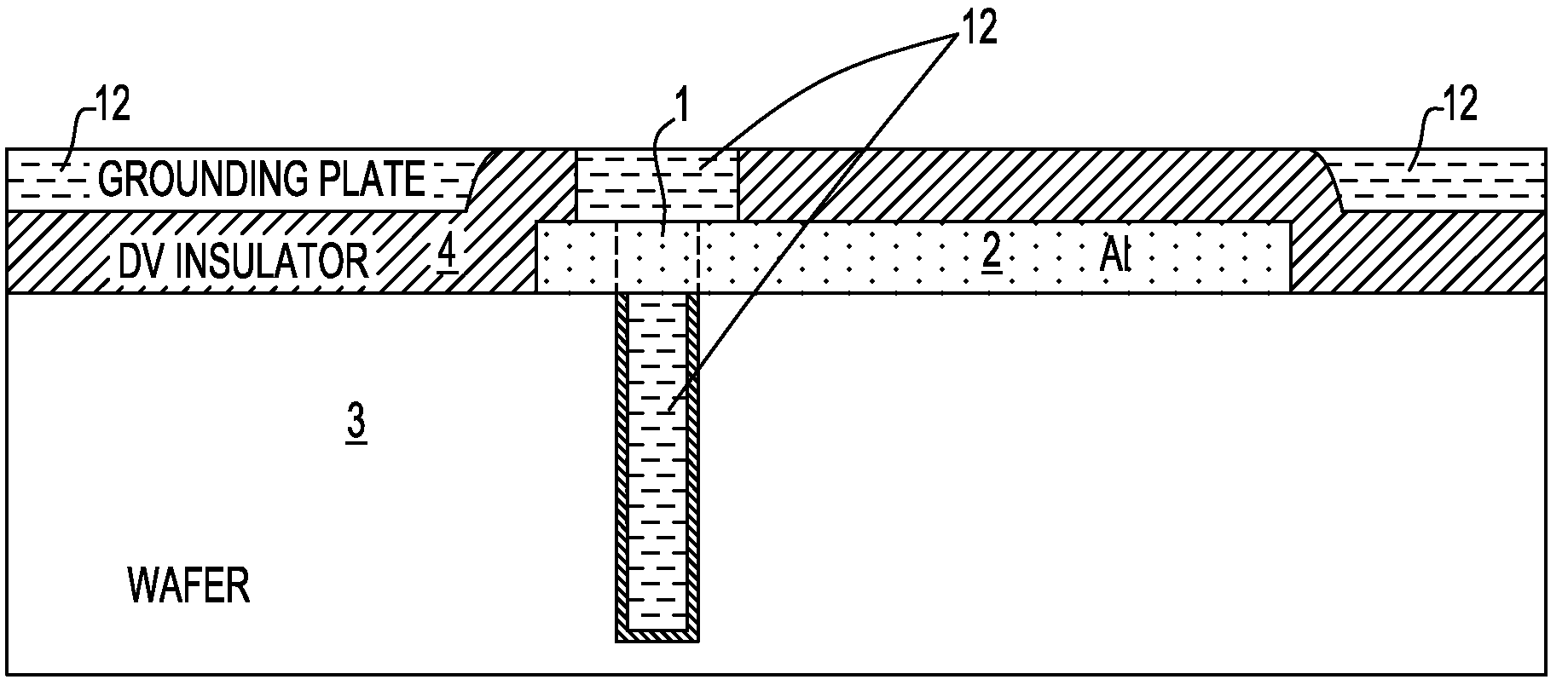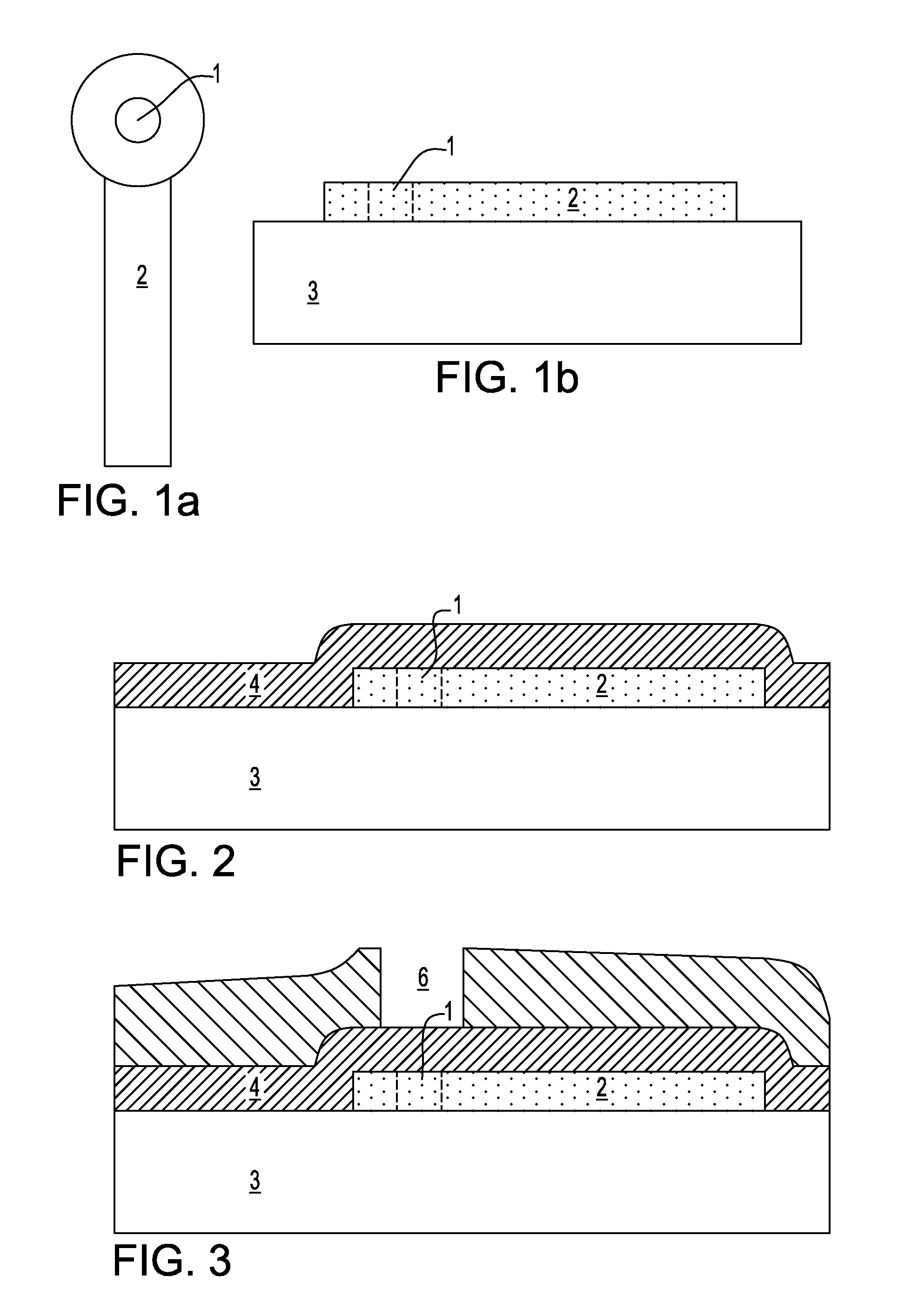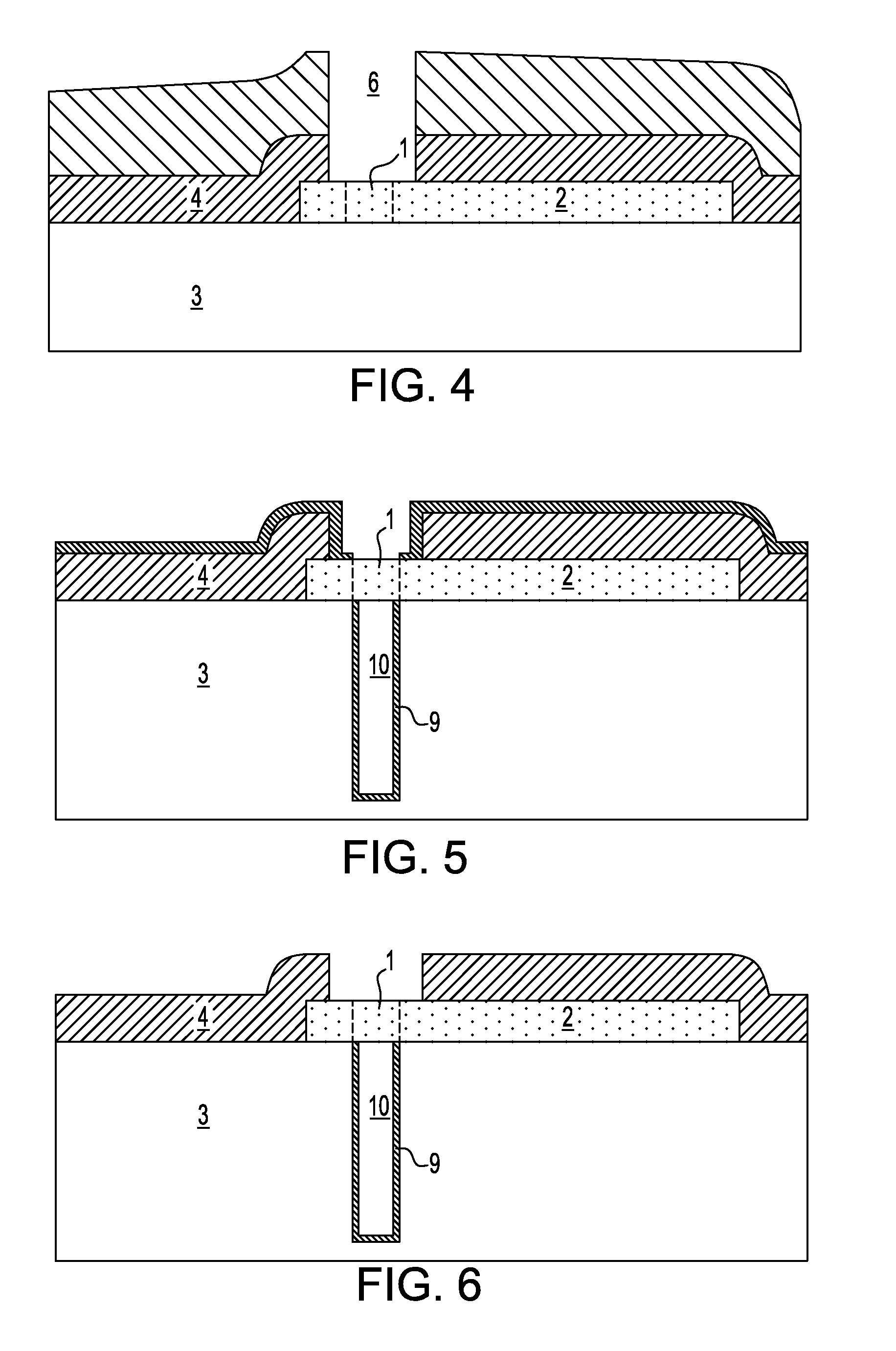Semiconductor Device Using An Aluminum Interconnect To Form Through-Silicon Vias
- Summary
- Abstract
- Description
- Claims
- Application Information
AI Technical Summary
Benefits of technology
Problems solved by technology
Method used
Image
Examples
Embodiment Construction
[0029]For simplicity and clarity, elements shown in the drawings have not necessarily been drawn to scale. For example, the dimensions of some of the elements of particular interest may be exaggerated relative to other elements.
[0030]Referring to FIG. 1(a), a top-down illustration of an aluminum annulus 1 connected to an aluminum strap 2 is shown. In the etch process for the through-silicon via, the chemistry used has little or no effect on the aluminum since aluminum etching requires a chlorine based chemistry not present in a TSV etch. Preferably, the annulus 1 has a 20 μm opening in the center, and an aluminum width of 4 μm. The aforementioned dimensions can be achieved by utilizing a lithography tool having an overlay specification greater or equal to 4 μm, permitting to use less advanced photoresist, since the sidewall of the resist becomes irrelevant in view of the RIE being shaped by the aluminum annulus. Additionally, once the TSV is completed and filled with conductor mater...
PUM
 Login to View More
Login to View More Abstract
Description
Claims
Application Information
 Login to View More
Login to View More - R&D
- Intellectual Property
- Life Sciences
- Materials
- Tech Scout
- Unparalleled Data Quality
- Higher Quality Content
- 60% Fewer Hallucinations
Browse by: Latest US Patents, China's latest patents, Technical Efficacy Thesaurus, Application Domain, Technology Topic, Popular Technical Reports.
© 2025 PatSnap. All rights reserved.Legal|Privacy policy|Modern Slavery Act Transparency Statement|Sitemap|About US| Contact US: help@patsnap.com



